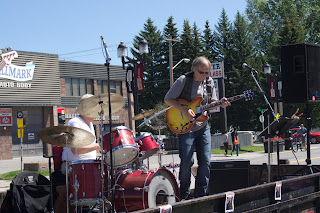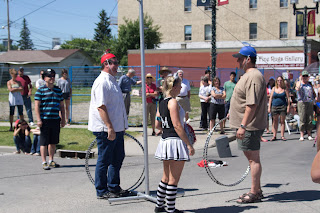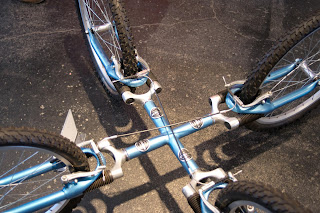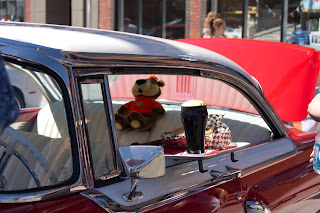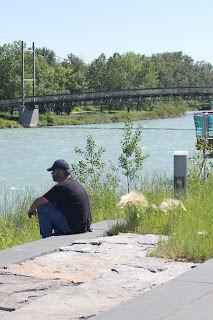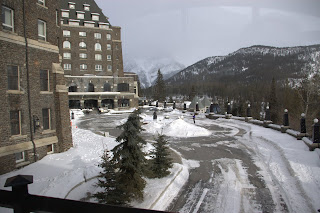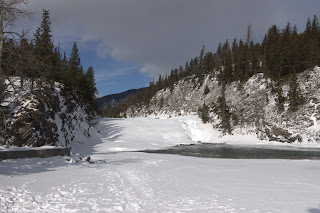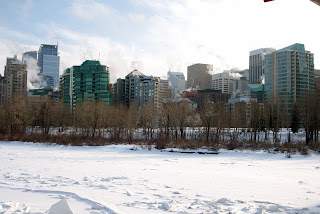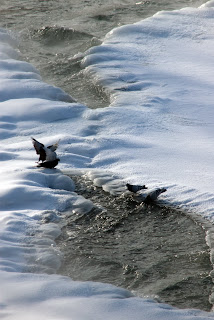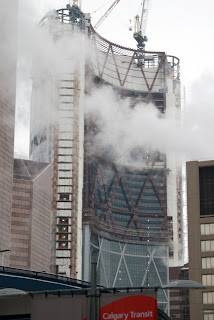
Aperture - How W I D E
Okay, now that we've talked about the camera specification I thought it might be time start getting into making pictures. Now anyone can TAKE a picture. Simply put the camera up to your eye and press the shutter release button. Click and you have a picture. And a lot of times a camera in AUTO mode is going to do an okay job. And to be honest with you I almost always leave my camera in AUTO mode so I can take that quick picture when I need to.
Using AUTO mode is a lot like having an expensive point and shoot pocket camera. I don't know about you, but I didn't buy a DSLR to take point and shoot pictures. I bought my DSLR so that one day I might be able to make pictures of National Geographic or Sports Illustrated quality.
One of the most important aspects of a photograph is how much light is let into the camera. Too much light and the picture is so bright it almost looks white. Not enough light and the pictures are very dark, almost black sometimes. Much in the same way your eyes are when we go into a very bright room or a very dark room. A big differences is the eyes are able to react a lot better than the camera does.
When we go from normal light in to a very bright room the pupils (the black centre part of the eye) gets a lot smaller so that less light enters the eyes. When we go into a dark room the pupils gets larger, to let more light into our eyes. What a cool idea. If only there was something like that on a camera.
But, there is. And it's called the Aperture. Defined on dictionary.com as '1 an opening, as a hole - 2 in optics an opening, usually circular, that limits the quantity of light that can enter an optical instrument' (such as a camera) Why would you want to limit the amount of light entering the camera you might ask? Don't you want as much light as possible? The answer, like many answers in photography, depends. It depends on what you are trying to do. Yes, if you are making pictures in low light you most likely will want to let in as much light as possible. Allowing the same of light in on a very sunny day will most likely over expose the picture so much that you may not be able to see anything at all.
Before getting into the details of aperture and its whens and whys it might be a good idea to take a look at just what 'letting more light in' looks like. I've taken several photos of an old 50mm lens with a manual aperture ring.
| f 2 |
| f 8 |
| f 22 |
As you can see the smaller the opening the larger the number. Please don't ask me why, kind of seems backward to me.
Okay. Lots of light, big f stop number. Low light, small f stop number. Great, got it. Nothing more to worry about right? Wrong.
The 'AUTO' mode on most cameras can get the f stop correct for bright or dark shots, most of the time. The other thing the aperture has a HUGE effect on is the how much of the picture is in focus. What I mean by that is when you'er making a picture of a person's face (portrait) you want the persons face to be in focus. Do you want or need everything in the background to be in focus? Assuming you don't want the background in focus simply open that f stop as wide as it will go (Smaller number). Ideally for a portrait you would want to use an f 2.? or even an f 1.? if your camera will go that low (open). The smaller the f stop number the shallower the depth of field. Going the other way if you want as much of the picture in focus as possible you want to close down that aperture as much as possible. Closing the aperture gives a much deeper depth of field. Deeper depth of field means a larger f stop number. In the f 20 or f 22 range or even deeper if your lens will allow it.
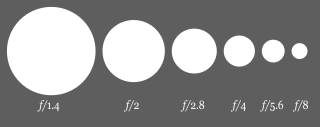 |
| f stop chart |

Lens - Through the Looking Glass
| 28 mm |
| 55 mm |
| 200 mm |
| 55 mm |
| 35 mm |
| 18 mm |
Camera Specification
Zoom Zoom
MegaPixel...whats a MEGAPIXEL
I can hear you saying to yourself 'but sometimes I might want to print a picture bigger then 4 X 6'.
Not to worry you are in luck. With out going through all the different sizes I will talk about maybe the most common portrait is 8 X 10. Most 8 megapixel cameras should be able to produce pictures suitable for 8 X 10 prints. Although you might want to error on the side of caution and use a 10 megapixel.
If you would like to check the number of megapixels need for other size of pictures check out this chart that I've 'borrowed' from design215.com
Whale Watching In Puerto Vallarta
 that seem to be snapped at just the right time, from just the right location. I know I have and I'm always asking my self 'how did he (or she) do that. As the person who got lucky with this whale photo made in February 2011 in the Bay of Puerto Vallarta I know that its a lot more then luck.
that seem to be snapped at just the right time, from just the right location. I know I have and I'm always asking my self 'how did he (or she) do that. As the person who got lucky with this whale photo made in February 2011 in the Bay of Puerto Vallarta I know that its a lot more then luck. water.
water. A few splashes
A few splashes . A lot
. A lot of
of tales. And a lot of
tales. And a lot of  whale
whale
 backs. (Know I know why they are called Humpback Whales)
backs. (Know I know why they are called Humpback Whales)We're Having a Heat Wave
With most of North America experiencing extreme heat conditions for much of the summer I thought I'd take this time to remind ever one.
WINTER IS COMING!
And until that happens, here are some wither pictures to remind as all of just how cold it can get.


















